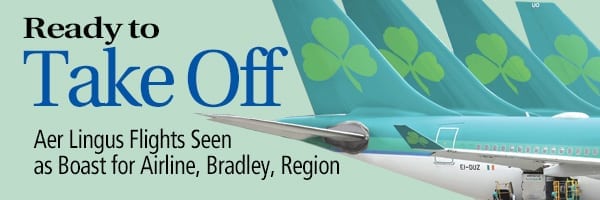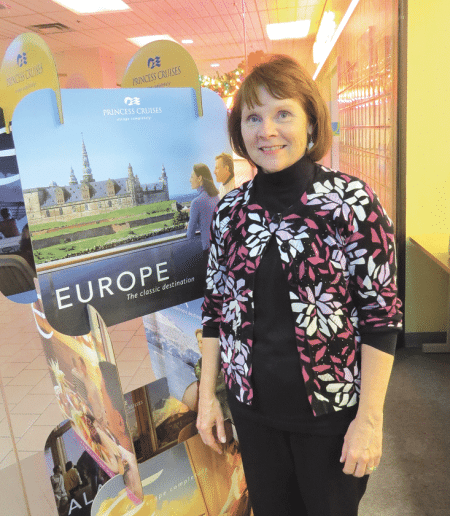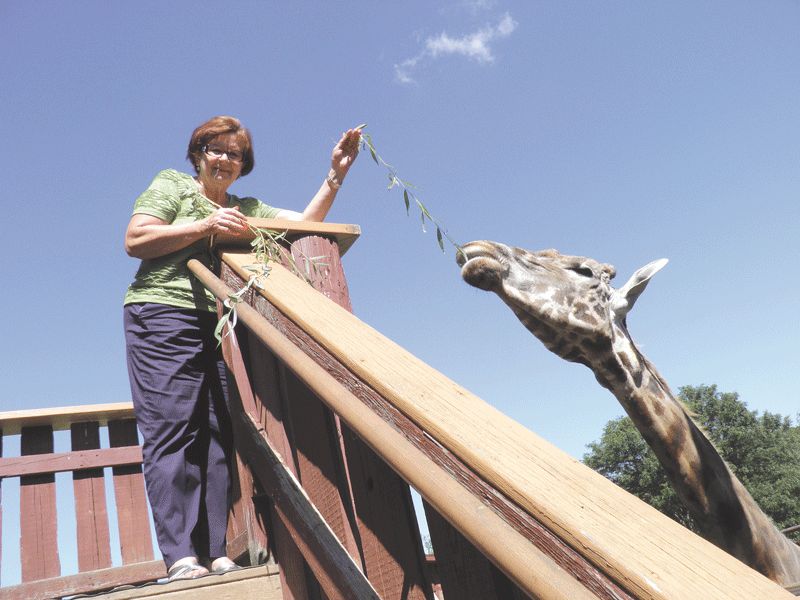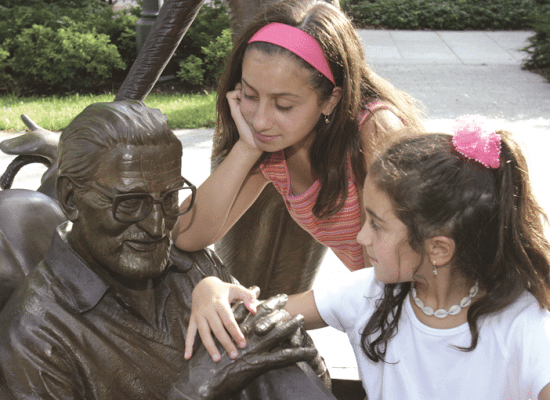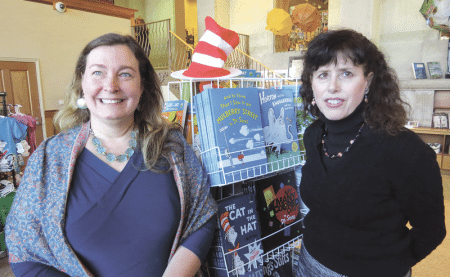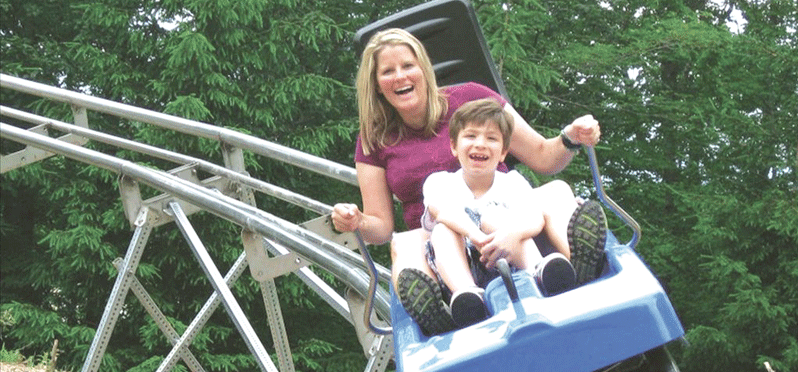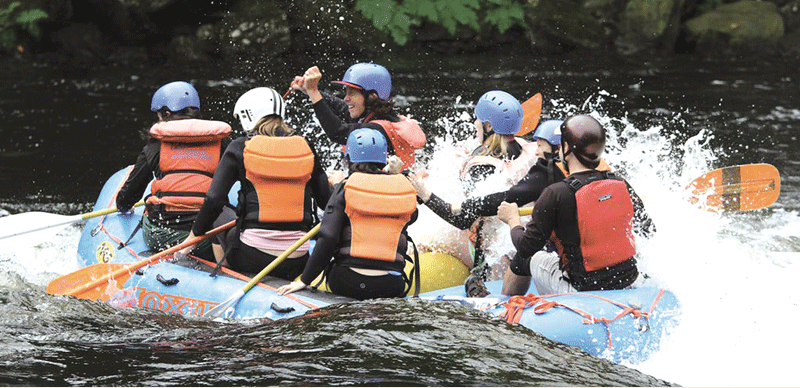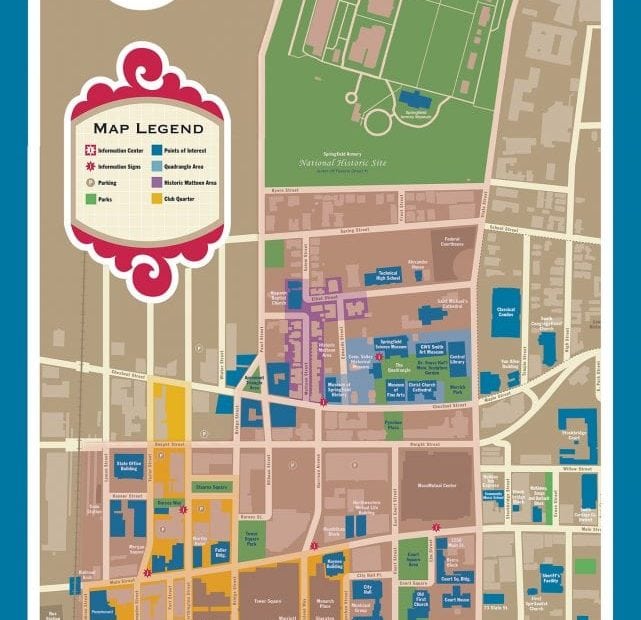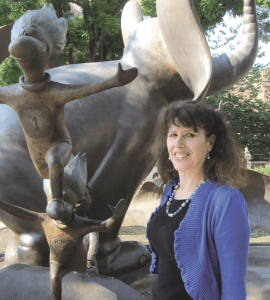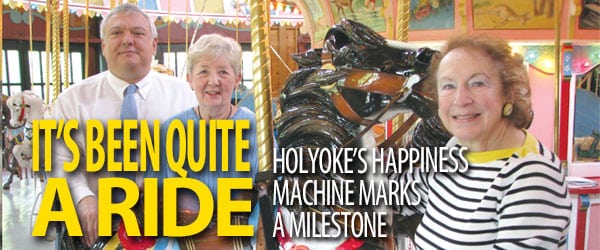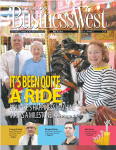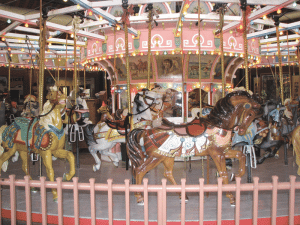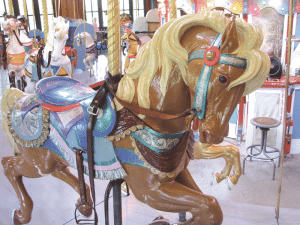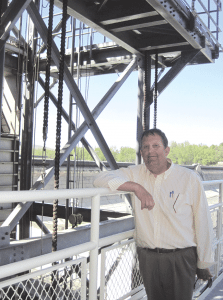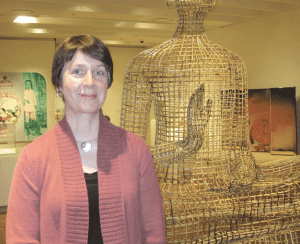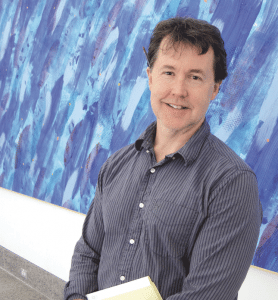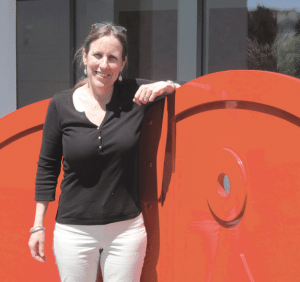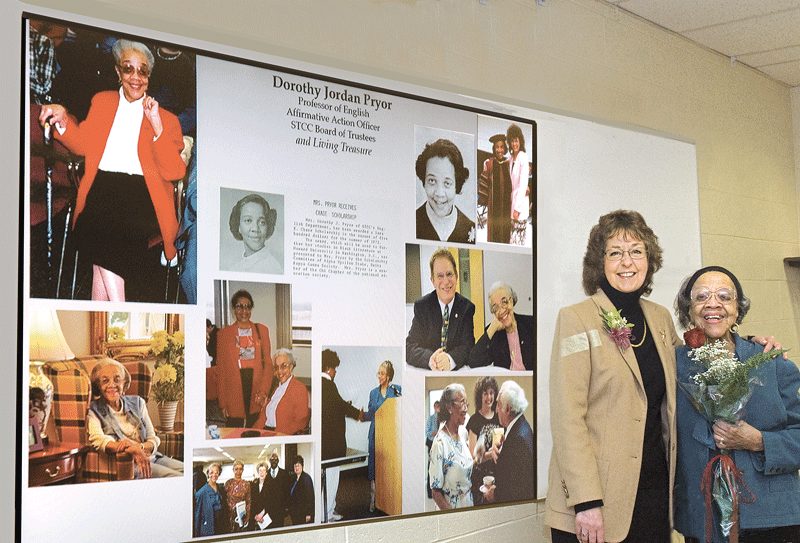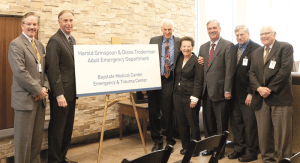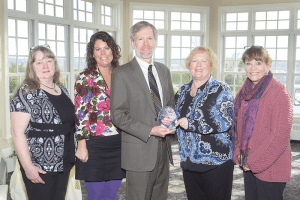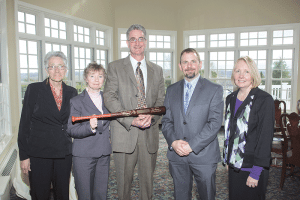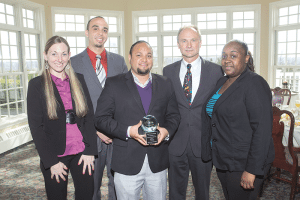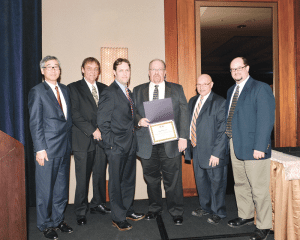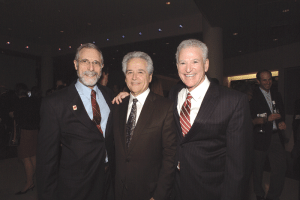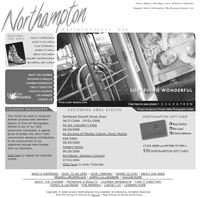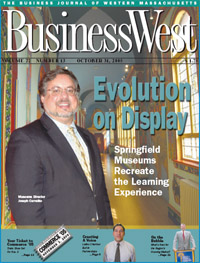Ready to Take Off
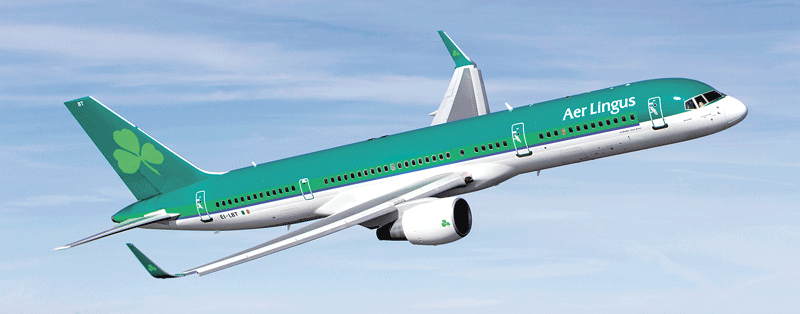
The Aer Lingus flights scheduled to begin at Bradley International Airport in September are expected to attract a mix of business and leisure passengers .
As they talked about the Aer Lingus flights set to begin at Bradley International Airport late next month, Kevin Dillon and Keith Butler used strikingly similar language as they discussed what the service means to their respective organizations.
Indeed, Dillon, executive director and CEO of the Connecticut Airport Authority (CAA), which manages Bradley, and Butler, chief commercial officer for the Dublin, Ireland-based airline, said the timing for this venture is ideal, that the flight represents a key component of their respective growth strategies, and that it could be a catalyst for more developments of this type.
And they were in agreement on something else, too: that a firm commitment from the region’s business community — with ‘region,’ in this case, meaning what has come to be called the Knowledge Corridor — is necessary for this venture to, well, get off the ground.
“The success of this flight relies heavily on business travel,” said Dillon. “We know that this is going to be an extremely popular route in the summer months — we’ll have a lot of leisure travelers on this flight — but in order to retain a flight, it has to be successful year-round.”
Added Butler, “we’re expecting good volumes of both leisure and business travel, but support from businesses will obviously be a key to success in Hartford.”
Looking ahead, both the airline and the airport believe they will get such a commitment, in large part because their research — and especially the CAA’s — tells them there is considerable demand for such a service (more on that later).
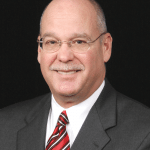
Kevin Dillon
The Aer Lingus flight will depart Bradley just after 6 p.m., local time, and arrive in Dublin at 5:20 the next morning, meaning that someone could be in London (via a connecting flight) for the start of the workday there, said Butler. The return flight will leave Ireland at 2:20 p.m. and arrive in Hartford at 4:20.
“You can essentially do a day’s work in Connecticut, hop on a plane, and immediately the following day do a full day’s work in London — if that’s what you wanted to do,” said Butler.
The flights will be on a Boeing 757, with 12 business-class seats and 165 in economy. Those aren’t big numbers, but the impact of this flight could be enormous, said both Butler and Dillon.
For Aer Lingus, now the fastest-growing airline in the world in terms of trans-Atlantic business, the Hartford flights represent another spoke in the wheel when it comes to a broad growth strategy that has seen the company add flights in several U.S. cities in recent years.
“We’ve nearly doubled our trans-Atlantic capacity over the past five years,” said Butler, while quantifying the growth of Aer Lingus, now part of IAG, which also owns British Airways. “We’ve expanded our business model; we don’t just fly people between the U.S. and Ireland — we’re increasingly flying more people into Europe via Dublin, and we’re looking to continue to grow.”
As for Bradley, the impact could be even bigger, largely because of what Aer Lingus has done in terms of broadening its reach, said Dillon, noting that, while the airport is, indeed, an international airport, that term is narrow in scope and limited to this continent. With the Aer Lingus flight, the definition will become much broader.

Keith Butler
Indeed, while the service will connect business and leisure travelers alike to the Emerald Isle itself — and there is ample demand for that — it will also bring convenient connections to dozens of other cities across Europe, meaning that travelers can begin their journey to those destinations by driving to Windsor Locks, not Boston, New York, or Newark, which represents a tremendous opportunity for the airport.
“Passengers from Hartford will be able to connect to at least 24 European cities,” Butler explained. “That includes London, Paris, Amsterdam, Madrid, Barcelona, Frankfurt, Munich, and many cities in Great Britain. Our flights won’t just connect people to Dublin, but all of Europe.”
For this issue and its focus on travel and tourism, BusinessWest takes an in-depth look at the Aer Lingus service out of Bradley, and at what it means for the airport, the airline, and, most importantly, this region.
Soar Subject
When asked for a timeline on the Aer Lingus service and a quick explanation of how it came about, Dillon ventured back to 2012 and the creation of the CAA, which brought what he called a “dedicated focus to aviation in this region.”
As part of this stated mission, the organization undertook extensive outreach to the Hartford-Springfield business community, with the goal of identifying ways to improve service to that vital constituency, said Dillon, adding that, while the results were not exactly surprising, they did provide the CAA with confirmation of what was wanted and needed, and thus a specific direction in which to move.
Actually, several of them, as things turned out. He noted that one of the stated desires within the business community was for non-stop service to the West Coast, a need addressed through a partnership with American Airlines, which in June began service out of Bradley to Los Angeles International Airport (LAX).
Go HERE for a list of Tourist Attractions in Western Mass.
“So far, it’s proving to be a very popular service,” said Dillon, adding that the flight not only provides business and leisure travelers with better, easier access to the West Coast, but also to Asia, which has become an increasingly popular destination for both constituencies.
But in many ways, the bigger stated priority was for trans-Atlantic flights, said Dillon, citing some eye-opening numbers gained through the CAA’s outreach.
“We worked with 23 companies representative of those across our catchment area,” he said, meaning the Hartford-Springfield corridor. “What we found is that those 23 companies were spending more than $43 million annually on trans-Atlantic travel. And we said, ‘if we could get just a piece of that, we could have a very successful trans-Atlantic route.”
Bradley has long sought such service as a growth vehicle and means to make it the proverbial airport of choice for people in this region. And it had such service nearly a decade ago, when Northwest Airlines introduced non-stop flights to Amsterdam, but that venture was doomed by poor timing — sky-high fuel prices and then the Great Recession — and the service ceased in September 2008.
Since then, Bradley and the CAA have been relentless in their quest to bring Europe back within its direct reach. But that sentiment hardly makes it unique.
“There are a lot of airports that are very hungry for European connections — the competition is actually quite fierce,” said Butler with a laugh, noting that Aer Lingus, now celebrating 80 years in business, has had many suitors, and many attractive options, as it has weighed proposals for continuing and accelerating its strong pace of growth.
Airports that want to prevail in that competition have to present opportunity in the form of a package of location, attractive conditions, ample opportunities to effectively market the service, and suitable demographics, meaning a mix of both leisure and business travelers looking for something more convenient than the available options.
Hartford presented just such a package, said Butler, adding that it became an attractive addition to the airline’s existing Northeast-corridor service in and out of New York (JFK), Boston, Newark, and Washington (Dulles), for many reasons.
“Hartford came about because it represented an opportunity to strengthen our position in the Northeast,” he explained. “It has strong cultural ties to Ireland, but also business relations. At the same time, we were also looking to try something different, and go into a secondary city.
“Bradley fits, and Hartford fits, into a broader plan we have for expansion,” he went on, adding that the airline has also recently added service to San Francisco, Toronto, and Los Angeles, among other destinations. “We’re growing quite rapidly.”
Indeed, the airline now flies to almost every major city in Europe — with 18 flights daily to London alone — as well as many destinations on this side of the Atlantic.
The timing for such additions is appropriate, he went on, adding that economic conditions globally have improved greatly since the recession, and that is especially true in Ireland, meaning more people are flying out of airports there for destinations on both sides of the Atlantic.
As for the Hartford flights, there will be four per week during the winter months, which Butler defines as October to March, and daily flights (all seven days) the rest of the year to accommodate greater leisure travel.
Dillon told BusinessWest that the initial response has been quite solid, and he expects demand to remain steady, because of the high level of connectivity to European cities that Aer Lingus provides, and also the airline’s ability to provide pre-clearance for its passengers heading back to the U.S., a service that could save them a two-hour trip in the line at customs.
The task at hand is to extensively market and promote the new flights and drive home to the business community the great opportunities that they provide.
“We’ve spent a significant amount of time out in the business community educating them about the flight,” he explained, “and trying to put them in touch with Aer Lingus to hopefully provide commitments to the airline for use of the service. Because if that support is not there, it’s going to be very difficult to make this flight work.”
Plane Speaking
As mentioned earlier, while they were talking from much different perspectives, Butler and Dillon used markedly similar language about the service set to start Sept. 28.
They both used the phrase ‘this makes perfect sense’ when talking about the flights, and for good reason. They add another dimension to the growth strategies for both organizations and open the door to new opportunities.
Not only to the airport and the airline — but the region and its diverse business community.
George O’Brien can be reached at [email protected]



